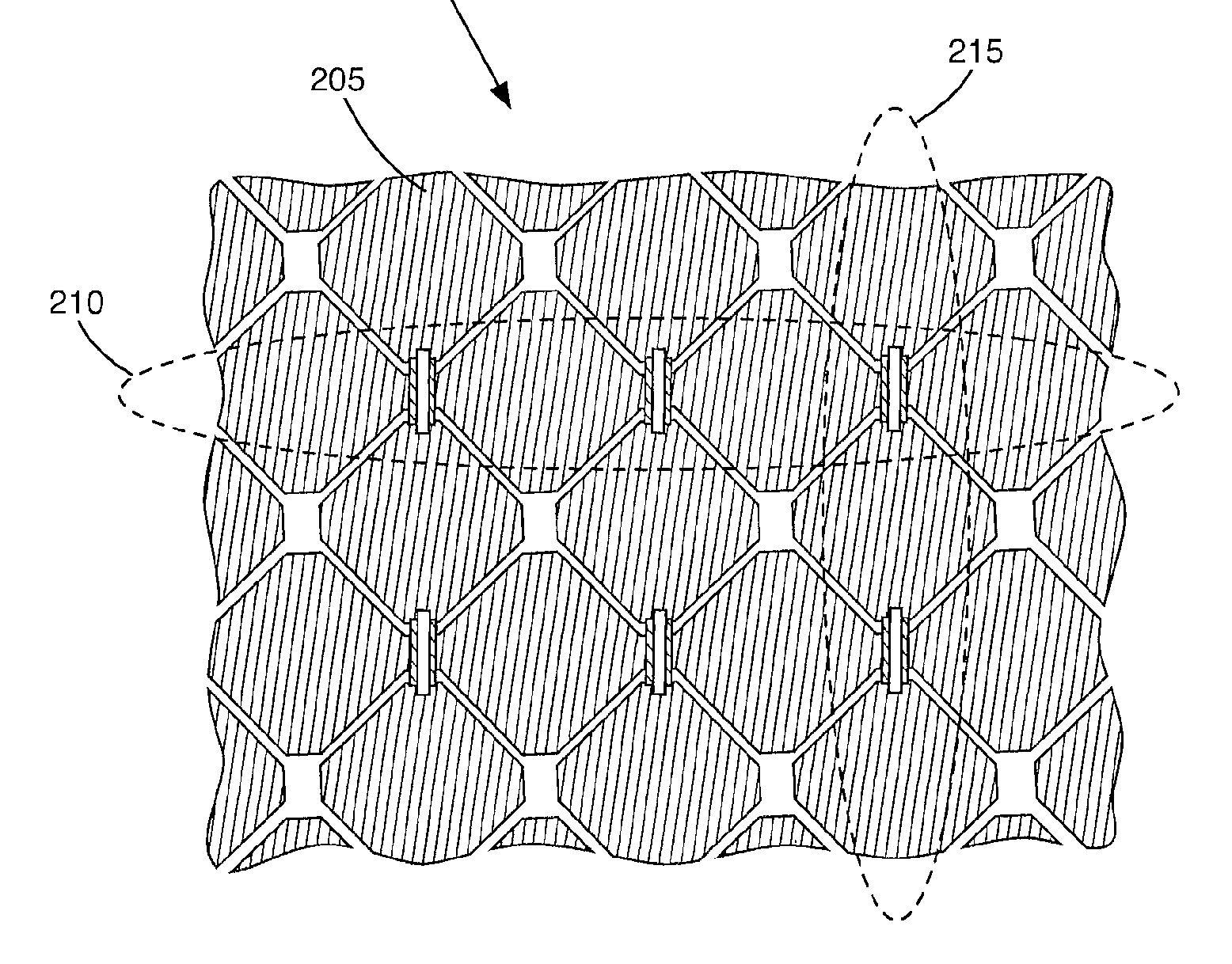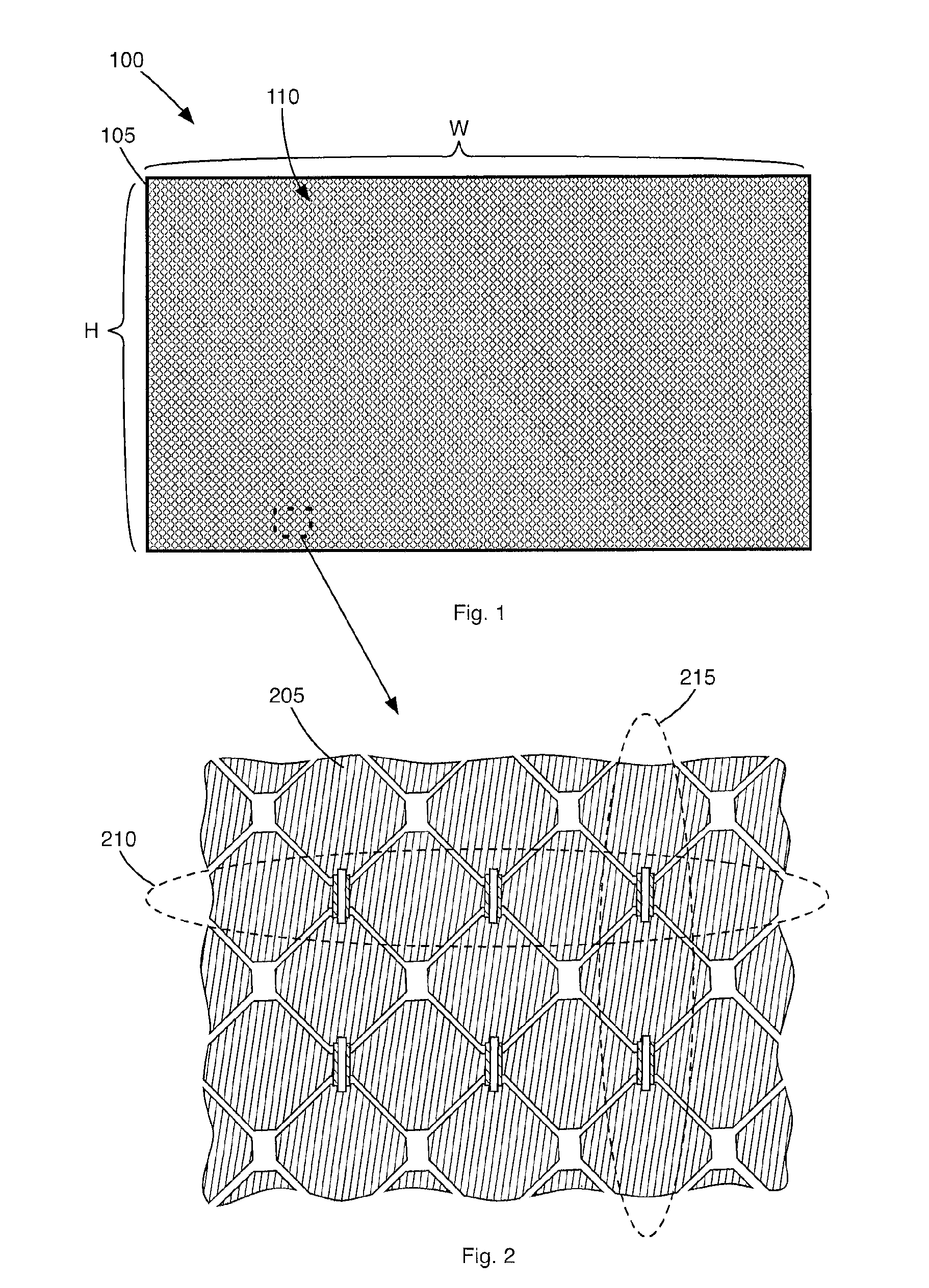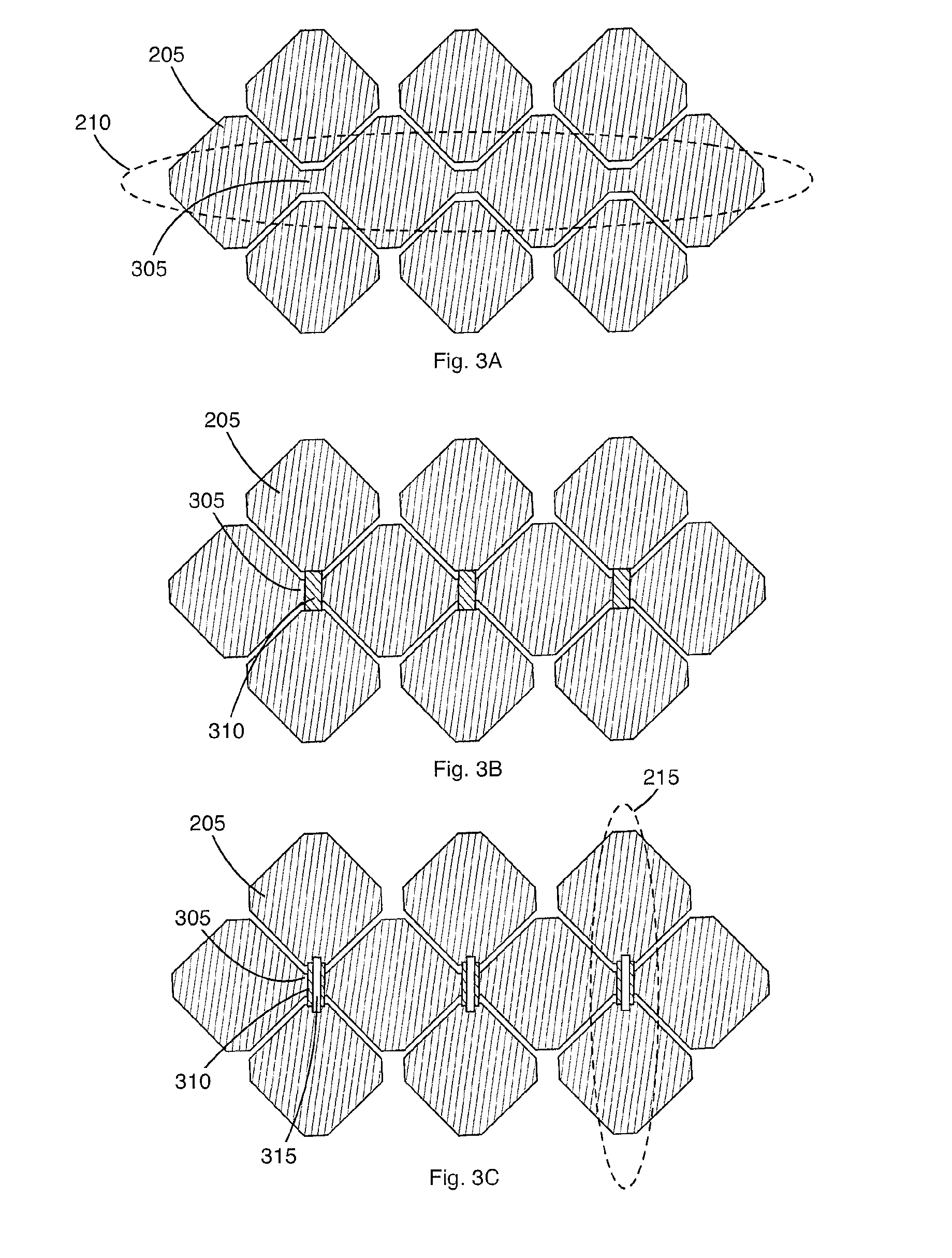Projected capacitive touch sensor with asymmetric bridge pattern
a capacitive touch sensor and bridge pattern technology, applied in the field of capacitive touch sensors, can solve the problems of high resistor-capacitor time constant (rctc) of horizontally and vertically arranged electrodes, the effect of affecting and the difficulty of adjusting the settling time of the touch sensor
- Summary
- Abstract
- Description
- Claims
- Application Information
AI Technical Summary
Benefits of technology
Problems solved by technology
Method used
Image
Examples
Embodiment Construction
[0020]The embodiments described below overcome the problems discussed above by utilizing connections with asymmetric elements to couple the pads of the horizontally and vertically arranged electrodes.
[0021]FIG. 1 illustrates capacitive touch sensitive device 100. The device 100 includes a substrate 105 upon which a electrode matrix 110 is arranged. The electrode matrix 110 includes a group of horizontally arranged electrodes and vertically arranged electrodes. In one exemplary embodiment, to accommodate a 16:9 display aspect ratio, the horizontally and vertically arranged electrodes fit within a rectangular area of the substrate that has a width, W, of about 477 mm and a height, H, of about 270 mm. Sixty-four vertically arranged electrodes and thirty-six horizontally arranged electrodes may be positioned within that area. In other words, the ratio of the number of vertically arranged electrodes to horizontally arranged electrodes may be about a 16:9. It is understood, however, that ...
PUM
| Property | Measurement | Unit |
|---|---|---|
| area | aaaaa | aaaaa |
| height | aaaaa | aaaaa |
| height | aaaaa | aaaaa |
Abstract
Description
Claims
Application Information
 Login to View More
Login to View More - R&D
- Intellectual Property
- Life Sciences
- Materials
- Tech Scout
- Unparalleled Data Quality
- Higher Quality Content
- 60% Fewer Hallucinations
Browse by: Latest US Patents, China's latest patents, Technical Efficacy Thesaurus, Application Domain, Technology Topic, Popular Technical Reports.
© 2025 PatSnap. All rights reserved.Legal|Privacy policy|Modern Slavery Act Transparency Statement|Sitemap|About US| Contact US: help@patsnap.com



